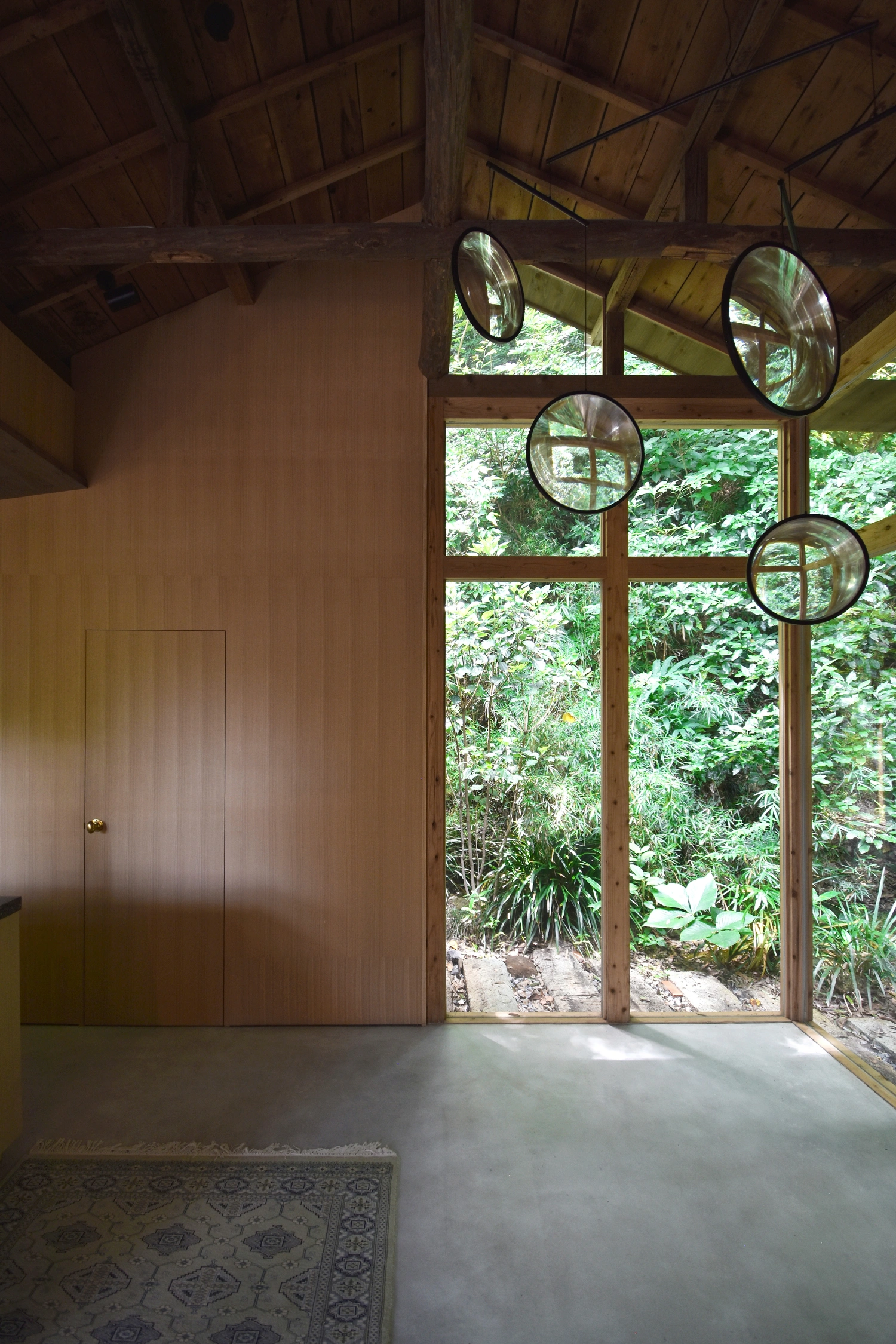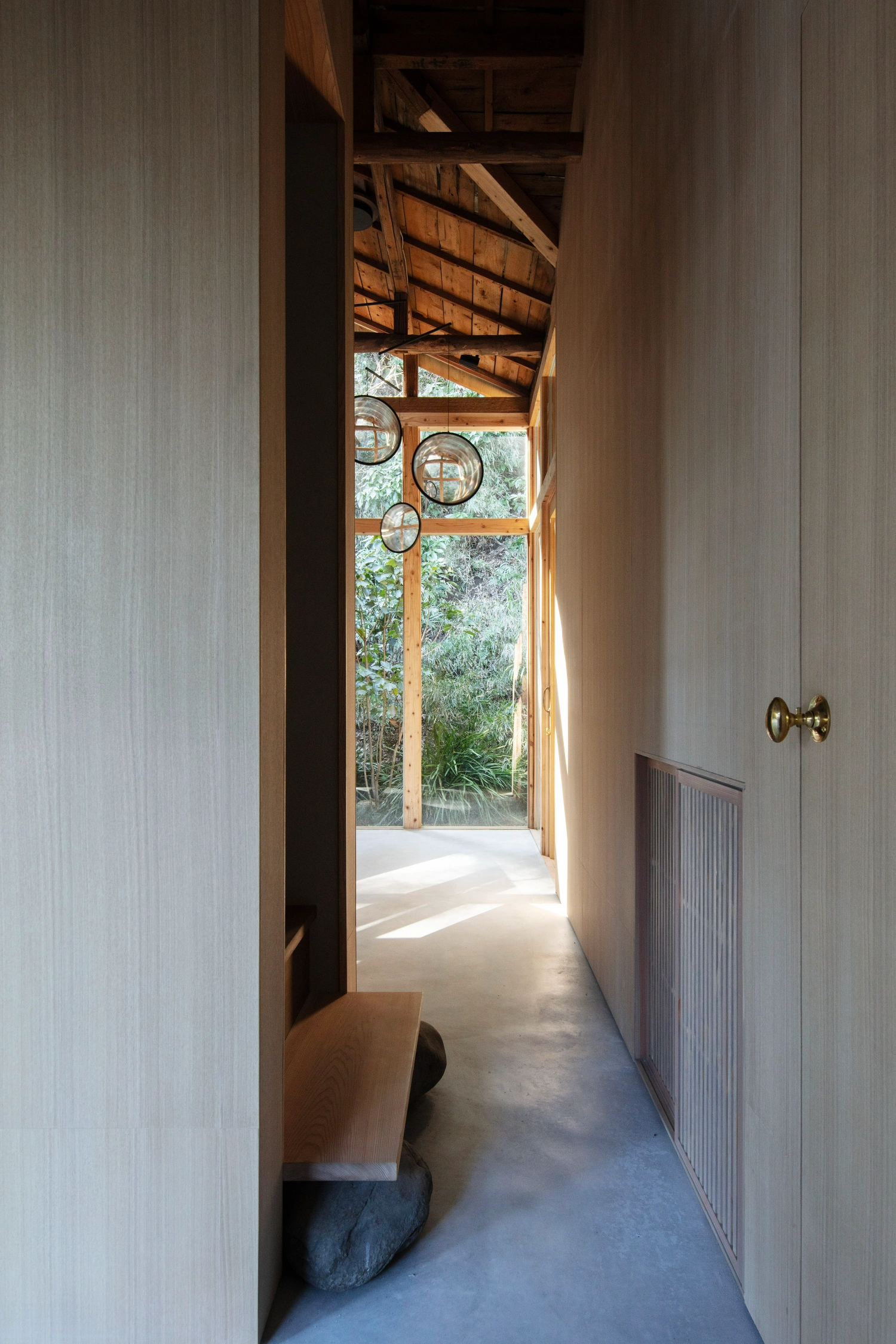Atelier in Kamakura in Japan by Yuji Okitsu is not merely a renovation—it is a meditation on the dialogue between decay and renewal, presence and memory.
Nestled into the steep cliffsides of Kamakura, this 90-year-old structure—once stripped to its skeletal framework—has been reimagined as an atelier and social space, suffused with the quiet poetics of time's passage. Okitsu’s intervention doesn't erase the scars of age but rather frames them as part of a living archive, where exposed reinforcements and salvaged materials narrate a story of endurance and transformation.
The house’s structural remains—wooden pillars standing among trees, glimpses of sunlight weaving through gaps—evoked, at first glance, a near-spiritual confluence between built form and surrounding landscape. Okitsu's renovation preserves this interplay. The visual honesty of mismatched wood tones, the decision not to conceal structural repairs, and the reuse of original foundation stones and antique window frames all serve to underscore a philosophy rooted in wabi-sabi, the Japanese aesthetic that embraces impermanence and imperfection.
Spatially, the project resists containment. Its design fosters circulation and openness—both physically and atmospherically. On the ground floor, atelier, kitchen, and dining spaces flow into one another without dead ends. Floor-level muso-mado windows link upper and lower stories, transmitting not just light and sound but also thermal presence, creating a dynamic and sensory continuity. Meanwhile, the concrete deck that slips from interior to garden, blurring thresholds, acts almost cinematographically—especially during rain, when ripples trace ephemeral patterns across the surface.
What emerges is an architecture that resists novelty for novelty’s sake. Instead, it becomes a vessel for continuity—of memory, material, and human connection. Okitsu does not just design with the site; he listens to it. The result is a dwelling not only for creative practice and hospitality but also for an embodied sense of time, allowing new life to root itself in old bones. In a city as historically resonant as Kamakura, this project stands as a rare example of architectural humility and intelligence—one that accepts the inevitability of change and embeds that acceptance in every joinery and surface.























